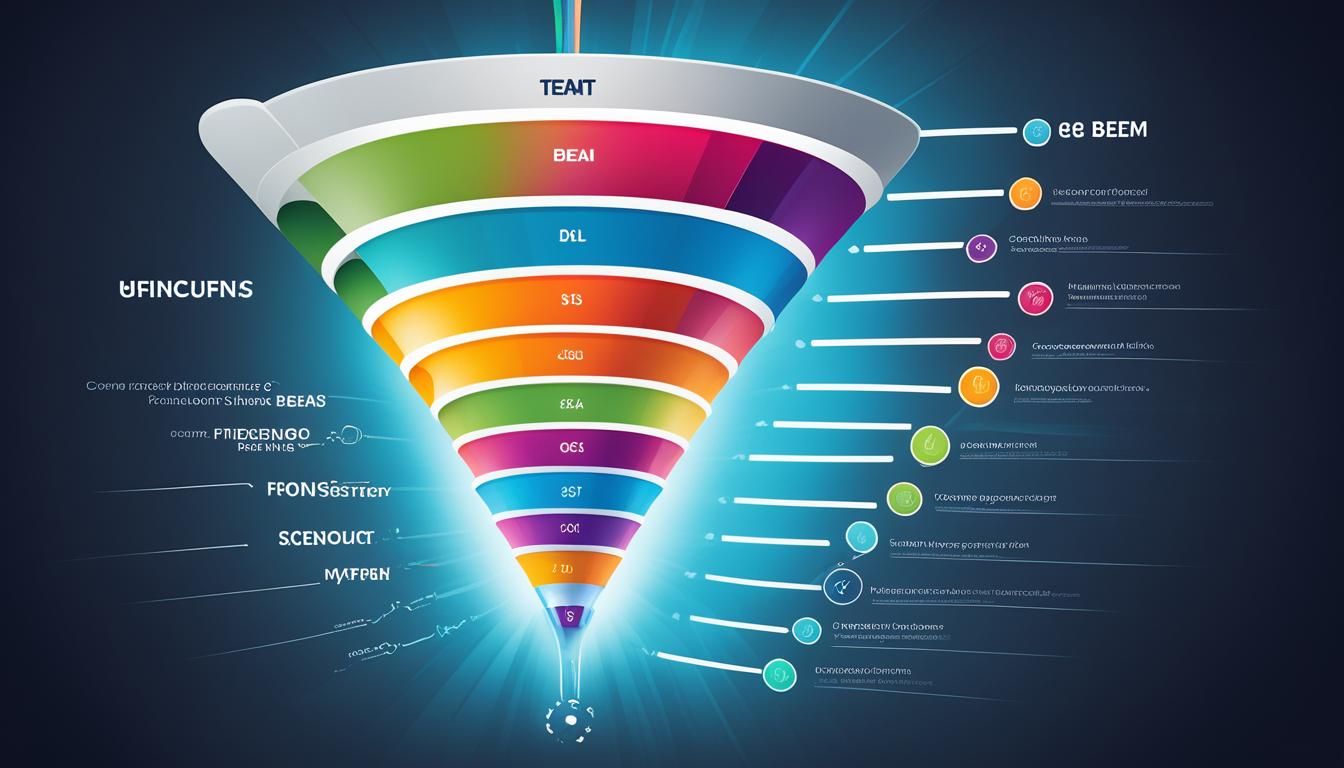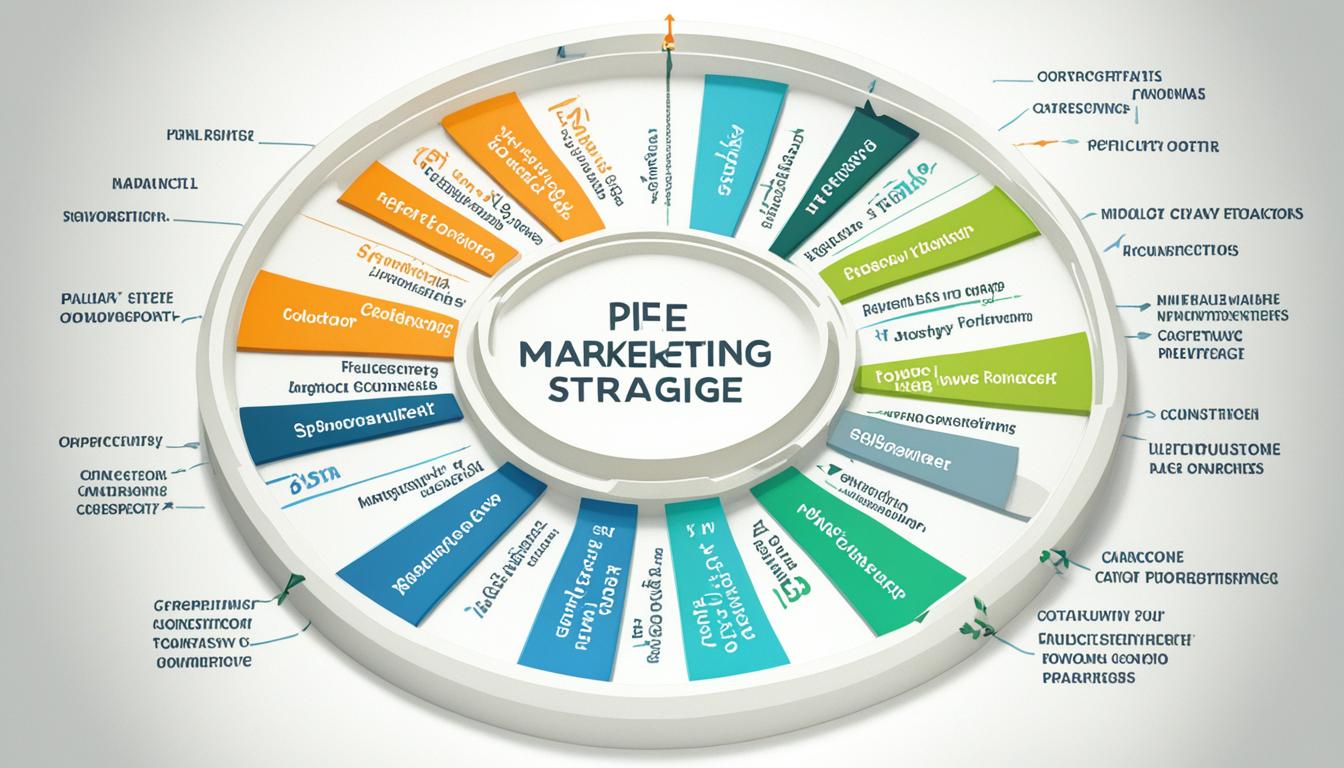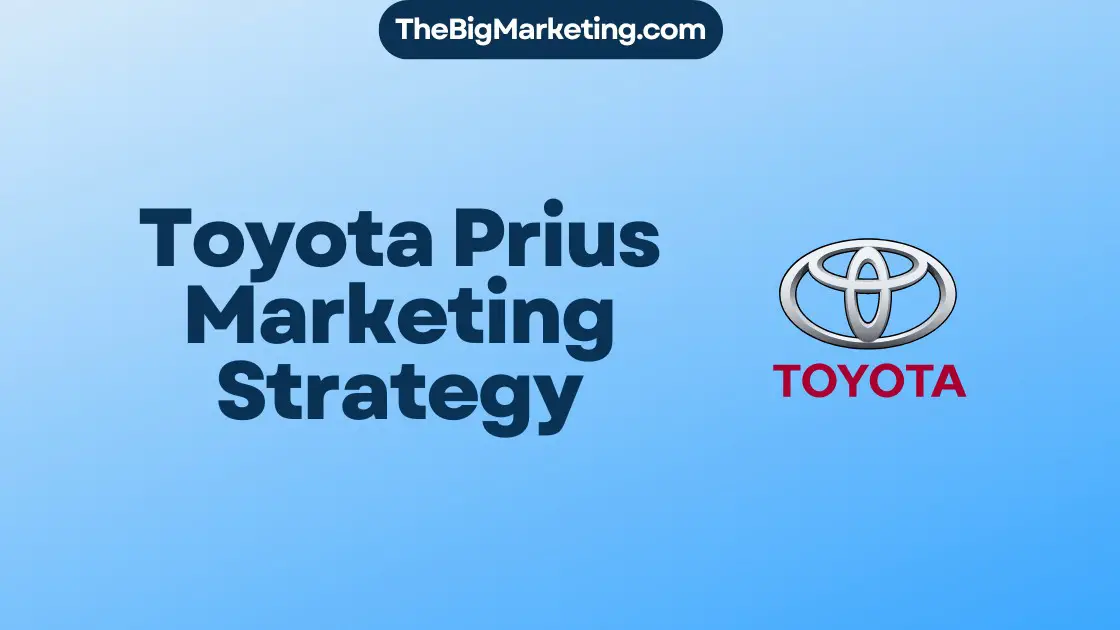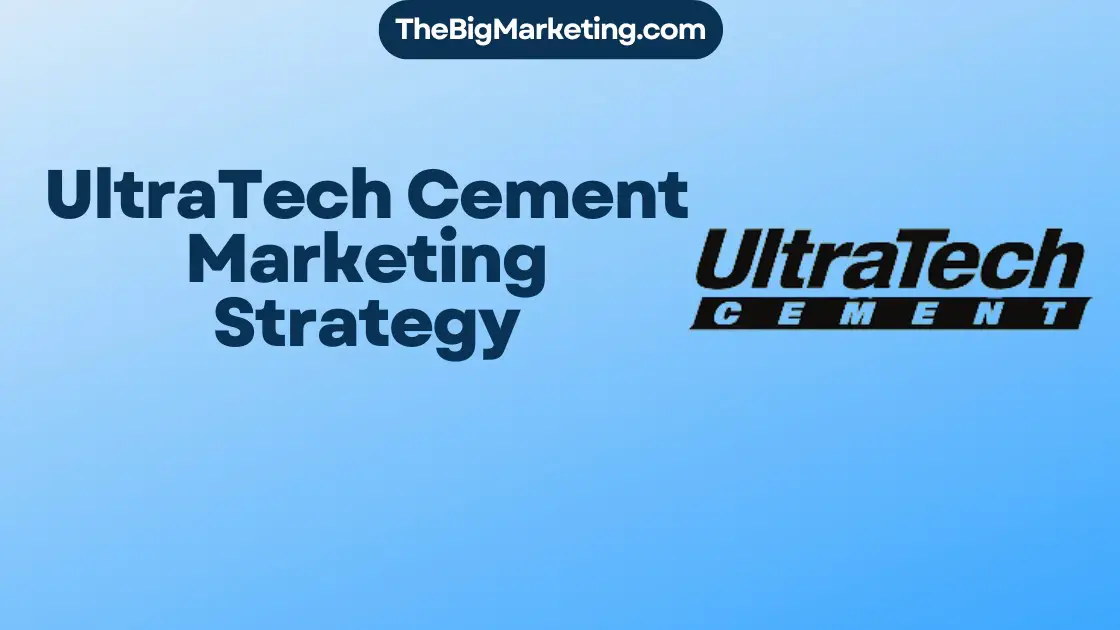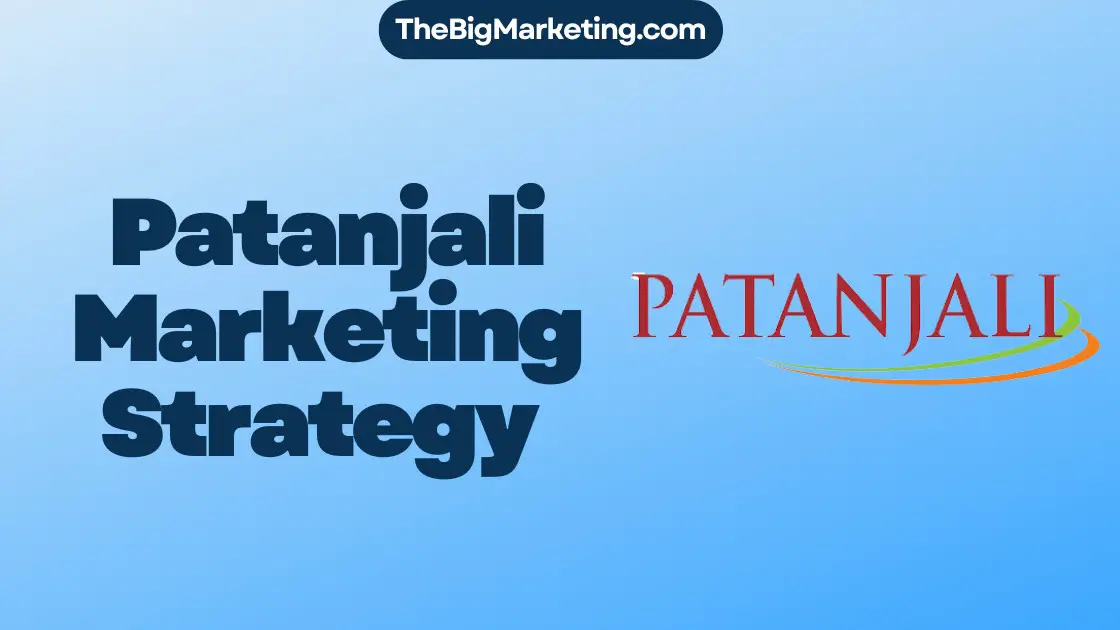A Content Marketing Platform (CMP) is a software solution that centralizes and streamlines the end-to-end content creation process in marketing. It helps teams plan, collaborate, and create materials that raise brand awareness, improve lead generation, and increase revenue. CMPs provide a scalable and data-driven approach to strategizing, producing, distributing, and analyzing marketing materials. They also integrate with other software systems, such as content management systems, social media channels, and email, to create a cohesive marketing technology stack. CMPs are typically used by marketing teams with a certain size and complexity of content production and when they need to attribute revenue or pipeline to their content assets.
Key Takeaways:
- Content Marketing Platforms (CMPs) streamline the content creation process in marketing.
- CMPs help raise brand awareness, improve lead generation, and increase revenue.
- CMPs provide a scalable and data-driven approach to content strategy and analysis.
- CMPs integrate with other software systems to create a cohesive marketing technology stack.
- They are used by marketing teams with a certain size and complexity of content production.
The Benefits of Using a CMP in Marketing
Using a Content Marketing Platform (CMP) in marketing provides numerous benefits that enhance content creation, improve brand awareness, drive lead generation, and increase revenue. Let’s explore the advantages of incorporating a CMP into your marketing strategy:
Streamlined Workflows and Workflow Automation
A CMP streamlines the content creation process, making it more efficient and organized. By centralizing the entire workflow within a single platform, teams can collaborate seamlessly, eliminating the need for manual coordination and reducing the risk of errors or delays. Workflow automation features further optimize the process by automating tasks such as content review and approval, freeing up time for marketers to focus on content creation and optimization.
Data-Driven Strategy and Content Impact Optimization
A CMP enables marketers to take a data-driven approach to their content strategy. By leveraging insights and analytics provided by the platform, marketing teams can identify the most effective content formats, topics, and distribution channels to maximize brand impact. These data-driven decisions help optimize content impact, ensuring that each asset resonates with the target audience, improves brand awareness, and drives lead generation.
Quantifiable Revenue Attribution and Lead Generation
One of the key benefits of using a CMP is the ability to attribute revenue and pipeline to each content asset. By tracking the performance of specific assets, marketers can measure their contribution to the sales funnel and quantify their impact on revenue generation. Additionally, CMPs facilitate lead generation by providing insights into the types of content that resonate with potential customers, allowing marketers to refine their strategy and attract high-quality leads.
Scalable Approach and Brand Management
A CMP offers a scalable approach to content creation and management, which is especially valuable for growing marketing teams and organizations. As the volume of content increases, it becomes more challenging to maintain consistency across different channels and ensure brand messaging aligns with brand guidelines. A CMP helps streamline brand management by providing a centralized hub for managing assets, enforcing brand standards, and facilitating collaboration between team members.
Approval Process and Workflow Optimization
The approval process for marketing materials can often be time-consuming and prone to bottlenecks. A CMP simplifies and accelerates this process by providing a structured and automated workflow for content review and approval. Marketers can set up predefined approval workflows and assign tasks to relevant team members, ensuring smooth collaboration and timely delivery of marketing materials.
Improved Efficiency and Workflow Optimization
The automation and optimization features of a CMP directly contribute to improved marketing efficiency. By reducing manual tasks and streamlining workflows, marketers can focus their time and energy on creating high-quality content and optimizing its performance. This increased efficiency leads to a more productive and effective marketing team.
To summarize, a CMP empowers marketing teams with the tools and capabilities to streamline workflows, automate processes, optimize content impact, track revenue attribution, and enhance brand management. By adopting a CMP, marketers can achieve greater efficiency, generate better results, and drive overall business success.
| Benefits of Using a CMP in Marketing | Description |
|---|---|
| Streamlined Workflows and Workflow Automation | Centralize and automate the content creation process, reducing manual coordination and streamlining tasks such as content review and approval. |
| Data-Driven Strategy and Content Impact Optimization | Leverage data insights to optimize content strategy, identify effective content formats and topics, and maximize brand impact. |
| Quantifiable Revenue Attribution and Lead Generation | Track the performance of content assets, attribute revenue to marketing efforts, and generate high-quality leads. |
| Scalable Approach and Brand Management | Scale content creation and management, maintain consistency across channels, and enforce brand guidelines. |
| Approval Process and Workflow Optimization | Automate and streamline the approval process for marketing materials, ensuring timely delivery. |
| Improved Efficiency and Workflow Optimization | Increase marketing efficiency by reducing manual tasks and optimizing workflows, leading to a more productive team. |
When to Consider Using a CMP in Marketing
As organizations grow and their content operations expand, the need for a content marketing platform (CMP) becomes increasingly important. Consideration of a CMP is crucial when the size and complexity of a content operation reach a certain threshold determined by factors such as the number of team members and the volume of materials being produced. At this stage, a CMP aids in streamlining the content creation process, ensuring efficiency, and maximizing the impact of marketing efforts.
One of the key aspects that make a CMP invaluable is its ability to attribute revenue and pipeline to content assets. Many marketing teams struggle with this attribution, which makes it challenging to justify the budget and quantify the project’s contribution to business objectives. A CMP collects and holds data related to the business impact of marketing materials, providing valuable insights that aid in budget justification and revenue attribution. With this data-driven approach, organizations can align their marketing efforts with their business goals and optimize their content creation strategies.
Furthermore, a CMP leverages search and social data, as well as performance data from past campaigns, to identify topics for new content assets. By analyzing search behavior and social media trends, marketing teams can gain valuable insights into what their target audience is looking for and create content that resonates with them. This data-driven approach ensures that marketing efforts are aligned with customer interests, leading to improved engagement and conversion rates.
In conclusion, a CMP is a valuable tool for organizations with growing content operations. By considering the implementation of a CMP, marketing teams can improve their content creation process, achieve revenue attribution, justify their budgets, and create content that resonates with their target audience. The integration of search and social data, as well as performance data, ensures that marketing efforts are data-driven and optimized for success.
| Factors to consider for implementing a CMP: | Benefits to be gained: |
|---|---|
| Content operation size | Streamlined content creation process |
| Content volume | Revenue attribution and pipeline management |
| Revenue attribution | Budget justification and optimization |
| Budget justification | Data-driven content strategy |
| Search and social data | Improved audience targeting and engagement |
| Performance data | Optimized content impact and conversion rates |
Pros and Cons of Using a CMP in Marketing
A Content Marketing Platform (CMP) offers various advantages and challenges for marketing teams. Let’s explore the pros and cons of using a CMP in your marketing strategy:
Pros:
Time-saving: One of the key benefits of using a CMP is the time saved through workflow automation. By automating processes such as content creation, review, and approval, marketing teams can focus more on generating impactful content and implementing effective marketing strategies.
Data-driven ideation: A CMP leverages data analytics to provide insights and suggestions for content topics that will resonate with your target audience. This data-driven approach helps improve the relevance and effectiveness of your content, leading to better engagement and results.
Pipeline and revenue attribution: CMPs enable you to track and measure the performance and impact of each content asset in your operation. This allows you to quantify the contribution of your content to pipeline and revenue, providing valuable insights into the effectiveness of your marketing efforts.
Cons:
Financial investment: Implementing a CMP requires a financial investment, with annual licensing costs typically ranging from $20,000 to $50,000 or more. Consider budget constraints and the potential return on investment before committing to a CMP.
Onboarding and training: CMPs often require several weeks or months of onboarding and training to maximize their potential. This initial investment of time and resources is necessary to ensure teams are fully equipped to utilize all the features and capabilities of the CMP.
| Pros | Cons |
|---|---|
| Time-saving through workflow automation | Financial investment |
| Data-driven ideation for relevant content | Onboarding and training requirements |
| Pipeline and revenue attribution insights |
While CMPs offer significant advantages in terms of time-saving, data-driven ideation, and quantifying pipeline and revenue attribution, there are financial and training considerations that organizations need to take into account.
Common Features of Content Marketing Platforms
Content marketing platforms (CMPs) provide a comprehensive set of features to support the entire content creation process. These platforms offer various functionalities that enable marketing teams to streamline their workflows and optimize their content strategies. Some of the most common features of CMPs include:
- Reporting and analytics: CMPs provide robust reporting and analytics capabilities that offer valuable insights into lead generation, pipeline attribution, and content production metrics. These insights enable marketers to track the performance of their content and make data-driven decisions.
- Editorial calendar: With an editorial calendar feature, CMPs allow marketers to visualize their content campaigns and plan their content creation and distribution activities. This helps teams stay organized and ensures a cohesive content strategy.
- Editorial workflow: CMPs simplify the content creation process by providing an efficient workflow framework. This feature allows marketing teams to collaborate seamlessly, from ideation to publication, ensuring content quality and consistency.
- Ideation tools: CMPs offer ideation tools that help marketers generate topic ideas for their content. These tools leverage data and insights to suggest relevant and engaging topics that resonate with the target audience.
- Content display and rendering: CMPs enable marketers to preview and visualize how their content will look on different platforms and devices. This feature ensures that the content is displayed optimally and provides a seamless user experience.
- Asset management: CMPs provide a centralized repository for organizing and managing various content assets. This includes images, videos, documents, and other media files. Marketers can easily search, access, and reuse assets, improving content efficiency.
- Martech integrations: CMPs integrate with other marketing technology systems, such as marketing automation platforms and content management systems. This integration allows for seamless data exchange and ensures a cohesive marketing technology stack.
These are just a few of the common features offered by content marketing platforms. The specific features may vary depending on the CMP vendor and the needs of the marketing team. By leveraging these features, marketers can enhance their content creation processes, improve efficiency, and drive better results.
Understanding the Differences Between CMPs, MAPs, and CMSs
While content marketing platforms (CMPs) share some similarities with content management systems (CMSs) and marketing automation platforms (MAPs), there are key differences between these tools.
A CMS provides core content management capabilities and publishes to websites and other channels. It focuses on organizing, storing, and distributing content efficiently. CMSs are commonly used to manage website content, including blogs, articles, landing pages, and product catalogs.
On the other hand, a CMP is a comprehensive solution that addresses the end-to-end content creation process. It goes beyond content management and includes features such as editorial workflow, content-specific analytics, and collaboration tools. CMPs are designed to streamline the content creation process, enabling marketing teams to plan, create, distribute, and analyze content effectively.
A MAP integrates with both CMSs and CMPs to handle various marketing automation tasks. MAPs focus on lead management, lead scoring, lead qualification, email marketing, and customer relationship management (CRM). They enhance the efficiency of marketing campaigns by automating processes and providing insights into customer behavior and engagement.
Understanding these differences is crucial for selecting the right tool for specific marketing needs. Depending on your requirements, you may need a CMS for effective content organization and distribution, a CMP for end-to-end content creation and analytics, or a MAP for marketing automation tasks and customer relationship management.
Comparison Table: CMP vs MAP vs CMS
| Content Management System (CMS) | Content Marketing Platform (CMP) | Marketing Automation Platform (MAP) | |
|---|---|---|---|
| Focus | Organizing and publishing content | End-to-end content creation and analytics | Lead management and marketing automation |
| Main Features | Content storage, distribution, and publishing | Editorial workflow, content-specific analytics | Lead scoring, lead qualification, email marketing, CRM |
| Use Case | Managing website content, blogs, articles | Planning, creating, and analyzing content | Automating marketing tasks, lead management |
The table above provides a concise overview of the main differences between CMPs, MAPs, and CMSs. It highlights the focus, main features, and use cases of each tool, allowing marketers to make informed decisions based on their specific needs and goals.
Selecting the Right CMP Vendor for Your Marketing Needs
When it comes to choosing a content marketing platform (CMP) vendor, there are several factors to consider to ensure you make the right decision for your marketing team. The following steps will guide you in the process:
- Define your budget range: Determine the amount you are willing to invest in a CMP. This will help narrow down your options and focus on vendors that fit within your financial capabilities.
- Identify core features: Determine the essential features you require in a CMP. Consider factors such as workflow automation, data-driven strategy, reporting and analytics, and martech integrations. Clearly identifying your core feature needs will help you prioritize and evaluate vendors accordingly.
- Schedule sales demos: Reach out to the shortlisted CMP vendors and request sales demos. During these demos, pay close attention to how well the core features align with your requirements. Evaluate the usability, functionality, and user-friendliness of the platform.
- Weigh decision-making factors: Consider the weight of each core feature in the decision-making process. Determine which features are crucial and non-negotiable for your marketing team. This will help you make an informed decision based on your specific needs.
Choosing the right CMP vendor is crucial for the success of your content creation and management. Select a vendor that aligns with your marketing goals, provides the essential features you require, and offers excellent customer support. With careful consideration and evaluation, you can find a CMP vendor that will optimize your marketing efforts and drive your business forward.
Implementing a CMP in Your Marketing Strategy
Implementing a content marketing platform (CMP) is a crucial step in optimizing your marketing strategy. With the software-as-a-service (SaaS) model, CMP vendors offer seamless integration and efficient onboarding programs to help your marketing team configure settings and customize the software to fit your unique needs.
During the onboarding process, you’ll have the opportunity to assemble your content marketing tools, projects, and campaigns within the CMP. This centralized platform allows for streamlined collaboration and ensures that your team operates efficiently and effectively.
Once your onboarding is complete, CMP vendors provide dedicated customer support contacts to assist you with any day-to-day inquiries or technical difficulties. Whether you have questions about configuration settings or need guidance on maximizing the platform’s capabilities, the support team is there to help.
For organizations that require additional assistance, some CMP vendors also offer training or consulting options. These services can provide further support and optimization, guiding your team in utilizing the CMP to its fullest potential.
Integrating a CMP into your marketing strategy unlocks the power of streamlined collaboration, efficient workflows, and data-driven decision-making. By leveraging the benefits of a CMP, you’ll enhance your content marketing efforts and achieve greater success in reaching your target audience.
Conclusion
In conclusion, a content marketing platform (CMP) is an essential tool for marketing teams looking to streamline their content creation processes, improve marketing efficiency, and adopt a data-driven strategy. By leveraging a CMP, marketing teams can optimize their workflow, improve content impact, and optimize their marketing budget.
CMPs offer a range of features that support the end-to-end content operation, including reporting and analytics, editorial workflow, ideation tools, and content display and rendering. These features provide valuable insights into the business impact of marketing materials, helping marketing teams make data-driven decisions.
While there may be considerations such as the required financial investment and onboarding process, the benefits of using a CMP outweigh the challenges. The improved workflow and content impact optimization enabled by a CMP lead to increased marketing efficiency and better overall ROI. Furthermore, optimizing the marketing budget becomes easier with the data-driven insights provided by a CMP, allowing teams to allocate resources effectively.
